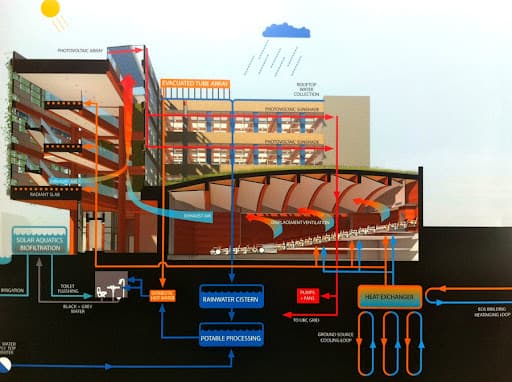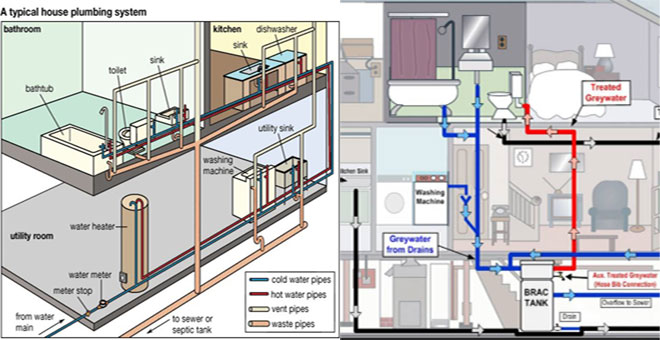We've unearthed this post relating to Exploring Your Homes Plumbing Anatomy listed below on the internet and thought it made sense to write about it with you on my blog.

Comprehending exactly how your home's pipes system functions is important for each property owner. From supplying tidy water for alcohol consumption, food preparation, and bathing to safely removing wastewater, a properly maintained plumbing system is crucial for your household's health and comfort. In this comprehensive guide, we'll explore the intricate network that composes your home's pipes and offer tips on maintenance, upgrades, and taking care of usual problems.
Introduction
Your home's plumbing system is greater than just a network of pipes; it's a complicated system that ensures you have access to clean water and effective wastewater elimination. Recognizing its parts and just how they collaborate can assist you avoid expensive repairs and make certain whatever runs smoothly.
Standard Components of a Pipes System
Pipes and Tubing
At the heart of your plumbing system are the pipelines and tubing that carry water throughout your home. These can be constructed from different materials such as copper, PVC, or PEX, each with its advantages in regards to sturdiness and cost-effectiveness.
Fixtures: Sinks, Toilets, Showers, and so on.
Fixtures like sinks, commodes, showers, and bathtubs are where water is made use of in your home. Recognizing exactly how these fixtures attach to the pipes system helps in diagnosing troubles and preparing upgrades.
Valves and Shut-off Factors
Valves regulate the circulation of water in your pipes system. Shut-off valves are critical during emergency situations or when you need to make repairs, allowing you to separate parts of the system without interfering with water flow to the whole house.
Water System
Main Water Line
The primary water line attaches your home to the community supply of water or an exclusive well. It's where water enters your home and is distributed to different components.
Water Meter and Pressure Regulator
The water meter actions your water use, while a pressure regulatory authority ensures that water flows at a risk-free pressure throughout your home's pipes system, preventing damage to pipelines and fixtures.
Cold Water vs. Warm water Lines
Understanding the distinction in between cold water lines, which provide water directly from the primary, and hot water lines, which bring warmed water from the hot water heater, helps in fixing and preparing for upgrades.
Drainage System
Drain Pipes Pipeline and Traps
Drain pipelines lug wastewater away from sinks, showers, and commodes to the sewage system or septic tank. Catches prevent drain gases from entering your home and likewise catch particles that can cause obstructions.
Air flow Pipes
Ventilation pipes enable air into the drain system, preventing suction that might slow down drain and create catches to vacant. Correct ventilation is necessary for keeping the honesty of your pipes system.
Importance of Proper Drainage
Guaranteeing correct drainage prevents backups and water damages. Routinely cleaning drains pipes and preserving traps can stop expensive repair services and prolong the life of your pipes system.
Water Heater
Sorts Of Hot Water Heater
Hot water heater can be tankless or standard tank-style. Tankless heating units heat water on demand, while tanks save warmed water for prompt usage.
Exactly How Water Heaters Link to the Plumbing System
Understanding how water heaters connect to both the cold water supply and hot water circulation lines aids in identifying problems like inadequate hot water or leakages.
Upkeep Tips for Water Heaters
On a regular basis flushing your water heater to remove sediment, examining the temperature level settings, and inspecting for leakages can prolong its life expectancy and enhance power effectiveness.
Common Pipes Issues
Leakages and Their Causes
Leaks can happen due to maturing pipes, loose fittings, or high water pressure. Addressing leakages without delay protects against water damages and mold development.
Blockages and Blockages
Blockages in drains and bathrooms are frequently brought on by flushing non-flushable items or an accumulation of grease and hair. Making use of drain screens and bearing in mind what goes down your drains pipes can avoid obstructions.
Indications of Pipes Troubles to Look For
Low tide pressure, slow-moving drains, foul odors, or abnormally high water bills are indicators of prospective plumbing issues that should be attended to promptly.
Pipes Upkeep Tips
Routine Inspections and Checks
Arrange yearly plumbing assessments to catch problems early. Look for indications of leakages, corrosion, or mineral accumulation in taps and showerheads.
DIY Upkeep Tasks
Easy jobs like cleaning tap aerators, checking for commode leaks utilizing dye tablet computers, or insulating subjected pipelines in cold environments can protect against significant plumbing issues.
When to Call an Expert Plumbing Professional
Know when a pipes issue requires specialist competence. Attempting intricate repairs without appropriate understanding can bring about more damages and greater repair costs.
Upgrading Your Plumbing System
Factors for Upgrading
Updating to water-efficient components or changing old pipelines can enhance water high quality, reduce water costs, and boost the worth of your home.
Modern Plumbing Technologies and Their Benefits
Explore innovations like clever leak detectors, water-saving bathrooms, and energy-efficient water heaters that can conserve cash and lower ecological impact.
Cost Factors To Consider and ROI
Compute the ahead of time costs versus long-term financial savings when considering plumbing upgrades. Numerous upgrades pay for themselves through decreased utility expenses and less fixings.
Ecological Impact and Conservation
Water-Saving Components and Devices
Setting up low-flow taps, showerheads, and toilets can substantially lower water usage without sacrificing efficiency.
Tips for Reducing Water Use
Simple practices like dealing with leaks without delay, taking shorter showers, and running full lots of washing and dishes can save water and lower your energy expenses.
Eco-Friendly Pipes Options
Think about lasting pipes products like bamboo for flooring, which is durable and environmentally friendly, or recycled glass for counter tops.
Emergency Preparedness
Actions to Take During a Pipes Emergency situation
Know where your shut-off shutoffs lie and just how to shut off the water system in case of a burst pipeline or major leak.
Relevance of Having Emergency Situation Contacts Helpful
Keep contact details for regional plumbing technicians or emergency solutions conveniently available for quick action during a pipes dilemma.
Do It Yourself Emergency Situation Fixes (When Appropriate).
Temporary fixes like making use of duct tape to spot a leaking pipeline or placing a pail under a dripping tap can reduce damages up until a professional plumbing arrives.
Final thought.
Comprehending the anatomy of your home's pipes system empowers you to maintain it properly, conserving time and money on fixings. By following normal maintenance routines and staying educated about contemporary pipes innovations, you can guarantee your plumbing system runs efficiently for several years to come.
Exploring Your Homes Plumbing Anatomy
Water Supply System
Main Water Line: This is where water enters your home from the municipal supply or a private well.
Water Meter: Typically located near where the main water line enters the property, it measures the amount of water used.
Shutoff Valve: It s crucial to know where this is in case of emergencies. It allows you to turn off the water supply to the entire house.
Pipes and Fittings: These distribute water throughout your home. Materials can include copper, PVC, or PEX.
Drain-Waste-Vent (DWV) System
Drains: Located in sinks, showers, and tubs, these carry wastewater away.
Traps: U-shaped pipes under sinks that hold standing water, blocking sewer gases from entering the home.
Vents: Pipes that lead from the DWV system to the outside, preventing vacuum formation and allowing gases to escape.
Sewer Line: Carries all wastewater from the home to the municipal sewer system or a septic tank.
Fixtures and Appliances
Sinks, Toilets, and Showers
Dishwashers and Washing Machines
Water Heaters
Maintenance Tips
Regularly check for leaks in exposed pipes and around fixtures.
Inspect the water heater annually for signs of wear.
Clean drains and traps to prevent clogs and odors.
Know how to shut off water to individual fixtures.
When to Call a Professional
Major leaks or burst pipes
Installation of new pipes or fixtures
Septic tank issues
Remodeling projects that involve plumbing changes
Conclusion
Understanding the anatomy of your home's plumbing is key to maintaining a functional and efficient system. Regular checks and knowing when to call in the experts can save you time, money, and stress.
https://www.mavyn.com/blog/exploring-your-homes-plumbing-anatomy

Exploring Your Homes Plumbing Anatomy
Water Supply System
Drain-Waste-Vent (DWV) System
Fixtures and Appliances
Maintenance Tips
When to Call a Professional
Conclusion
Understanding the anatomy of your home's plumbing is key to maintaining a functional and efficient system. Regular checks and knowing when to call in the experts can save you time, money, and stress.
https://www.mavyn.com/blog/exploring-your-homes-plumbing-anatomy
I ran across that blog entry about Exploring Your Homes Plumbing Anatomy when doing a lookup on the internet. Sharing is good. Helping people is fun. I cherish your readership.
Visit Website